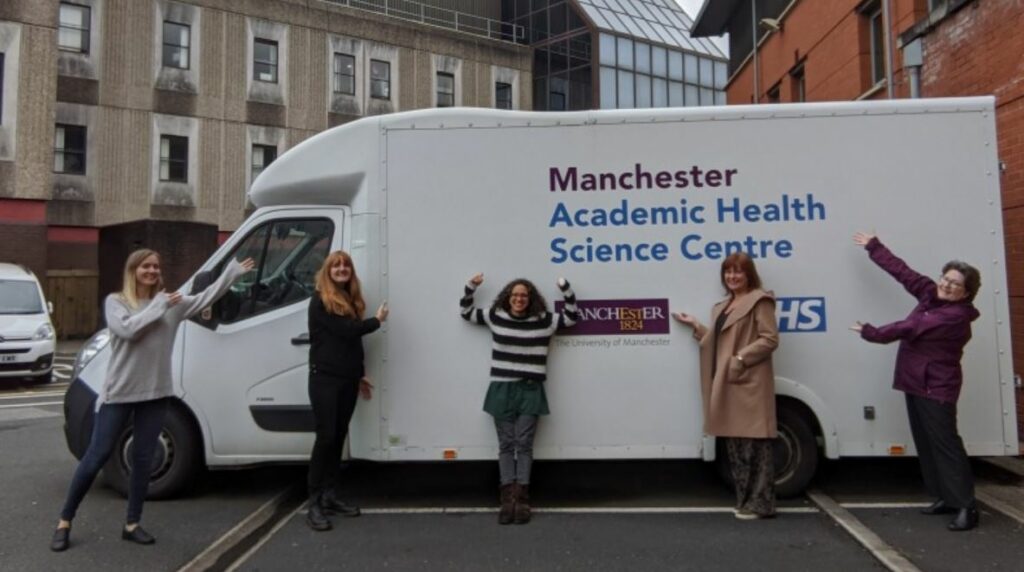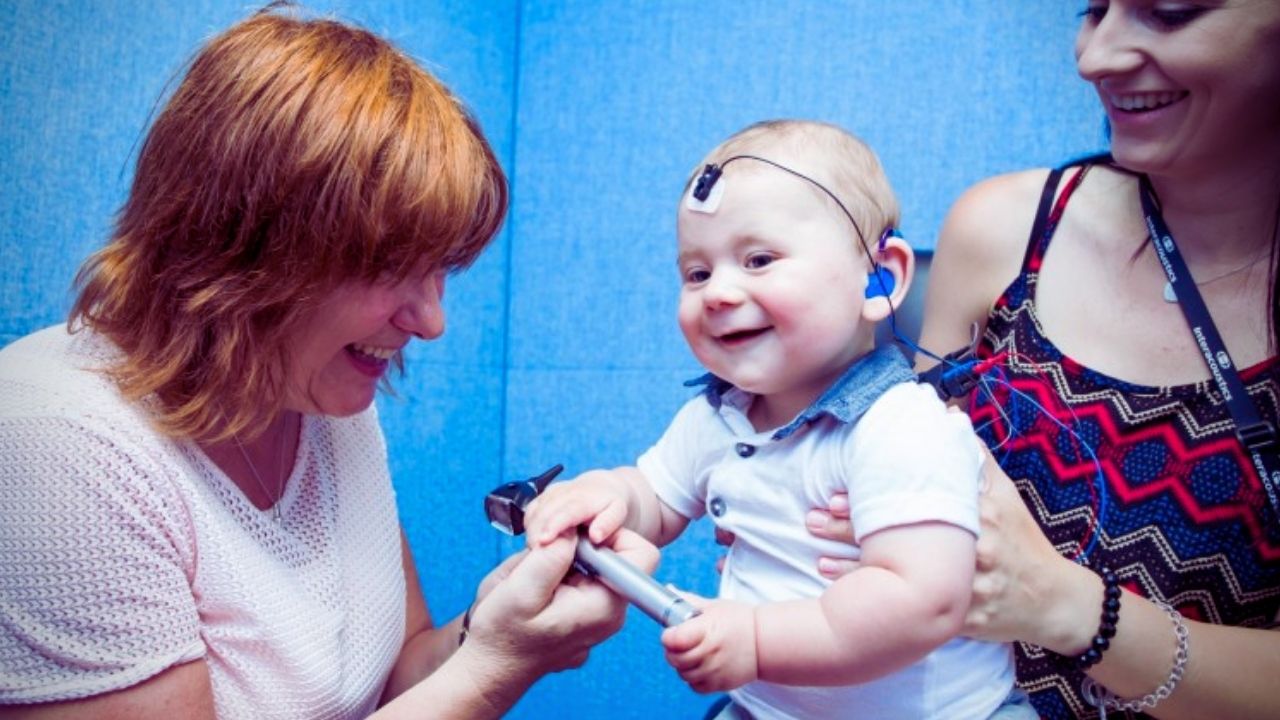UK researchers have found that the Cortical Auditory Evoked Potential (CAEP) test could soon be used to reassure parents of newborn babies with hearing loss that their babies are in fact hearing speech through their hearing aids. The study was carried out by University of Manchester scientists, who assessed the test on 103 babies aged three to seven months while traveling across the UK in a research van.
The test showed a positive response to speech played through the baby’s hearing aids when the baby could hear the speech at a clear level and showed a negative result when the baby could not hear the speech.

Test team shown with van. Credit: University of Manchester
The study, which was funded by the National Institute for Health and Care Research (NIHR) Research for Patient Benefit Programme, the NIHR Manchester Biomedical Research Centre, the William Demant Foundation, the Marston Family Foundation, and the Owrid Foundation, was published in the journal Ear and Hearing.
The Manchester team collaborated with the Interacoustics Research Unit to develop a new protocol which used different types of sound stimuli. The team also showed the benefit of repeat testing to improve its sensitivity.
All newborn babies have a hearing screening test when they are born. If they fail the screening test, they are given another test by audiologists, while the baby is asleep using electrodes on the scalp. If the follow-up test shows a hearing loss, they are then fitted with hearing aids, a process which can take up to three months. Currently, there is no reliable way of testing how well babies are hearing through their hearing aids between three and seven months, as infants are not yet able to consistently respond by showing behaviours such as turning their head in response to a sound.
One in a 1000 babies are born with hearing loss and go on to have hearing aids fitted in the first months of life. The problem is, it’s not until they are around 7-9 months old at the earliest when we can use traditional tests of hearing. This can leave parents concerned about whether or not their babies are hearing the sounds the hearing aids are providing. However, our findings show the Cortical Auditory Evoked Potential test can help reassure parents about how babies are hearing through their hearing aids
–Anisa Visram, Lead Study Author
Lead author Anisa Visram, a lecturer at The University of Manchester, said the study showed the Cortical Auditory Evoked Potential test can help reassure parents about how babies are hearing through their hearing aids. She also highlighted that this study would not have been possible without the research van that enabled the team to get to parents across the country. Cochlear implantation is set in motion if the babies are still not hearing despite the hearing aids.
“The ability to treat and diagnose hearing loss from an early age is partly down to the research we carried out at Manchester over the last few decades,” commented Kevin Munro, Professor of Audiology at The University of Manchester and Manchester Biomedical Research Centre Hearing Health Theme Lead. “Now we think it’s likely audiologists will be able to test how well a baby is hearing through their hearing aid during that crucial period from between three and seven months where no testing is currently available. Not only does this give parents the reassurance their child’s hearing aid is working, but also in instances when the babies are still not hearing despite the hearing aids, it will set in motion the process of cochlear implantation more quickly.”
Referenced Study: Aided Cortical Auditory Evoked Potentials in Infants With Frequency-Specific Synthetic Speech Stimuli: Sensitivity, Repeatability, and Feasibility
Source: University of Manchester; Image credit: U of M






